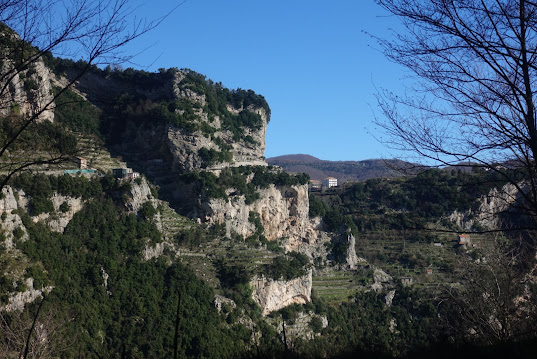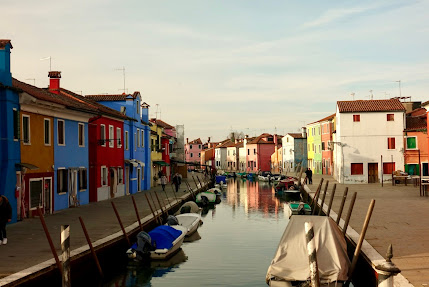 |
| A Terraced Hillside on the Amalfi Coast |
 |
| A Terraced Lemon Grove |
On January 16th, we discussed various environmental aspects of Italy. On this day, we focused on readings detailing the culture and environment surrounding olive production, some important issues concerning sustainable farming, and rural landscapes of historical interest. These topics made me reflect on many of the site visits that we have had throughout our time in Italy. For example, while reading the article about sustainable farming, I reflected on the times that we witnessed these practices and the effects of climate change when we took tours through the olive grove, the lemon orchard, and the sheep farm. During our visits to these sites, we witnessed the beautiful and often fragile relationship between human cultivation/development and the natural environment. At the olive grove, the guide discussed the way that she and her family have had to adapt to the changes in the climate over the generations. From when her ancestors first built their farm to now, many things have changed due to human-caused climate change. Some examples of this are the time of year that the olives must be harvested and the amount of water that is required to keep the plants healthy.
 |
Old Machinery Used to Create Olive Oil
|
While there is a lot of work and adaptation that is required in order to prevent the total loss of the olive groves in Italy as climate change progresses, this work is undoubtedly necessary in part because of the deep cultural ties that Italy has to the production of olive oil. One of our other readings focused on the cultural salience that olive plants have had in Roman history. As we saw at the olive oil factory, olives have many uses other than just creating oil and eating them whole. The Romans devised many other uses such as soaps, lotions, perfumes, and medicinal uses. So, all of the olive farms that still exist in Italy to this day are direct representations of the deep cultural symbolism that olives have always had in Italy, starting with the Romans.
Earlier, I used the phrase “natural world,” which can have many definitions. I want to talk about this phrase a little more concerning the text about historical rural landscapes. When thinking of the natural world, the automatic implication that many of us apply is that the natural world is devoid of any human interference. However, maybe this isn’t always the case. The reading on Italian Historical Rural Landscapes discussed the concept of rehabilitated spaces. The label ‘rehabilitated spaces’ covers a myriad of spatial conditions, but often refers to spaces that have been damaged by human activity and then recovered by human intervention. I think that, while spaces of this type have been rehabilitated to reflect the original natural state of this space, due to the human intervention that was required to take place, these areas are not entirely ‘natural’ anymore, but still hold much of their original natural purpose. However, would it be accurate to call spaces that saw intervention from humans hundreds or thousands of years ago unnatural? This question was on my mind while walking through the terraced lemon groves along the Amalfi Coast. While the terraces were formed by humans with the intention of easier farming and traversing, the terraces have been the geological fact of the area for so long, that they have almost imbedded themselves into the natural truth of the area. While natural status is a complicated thing, I think that it is important to consider because this status greatly shapes the way that we as humans interpret and interact with an area.
 |
| A Terraced Hillside Along the Coast |
 |
| A Horse Grazing on a Terraced Hill |







.jpg)
Comments
Post a Comment